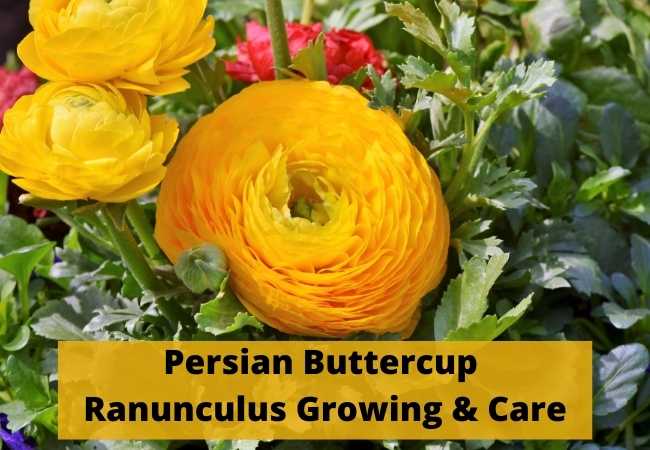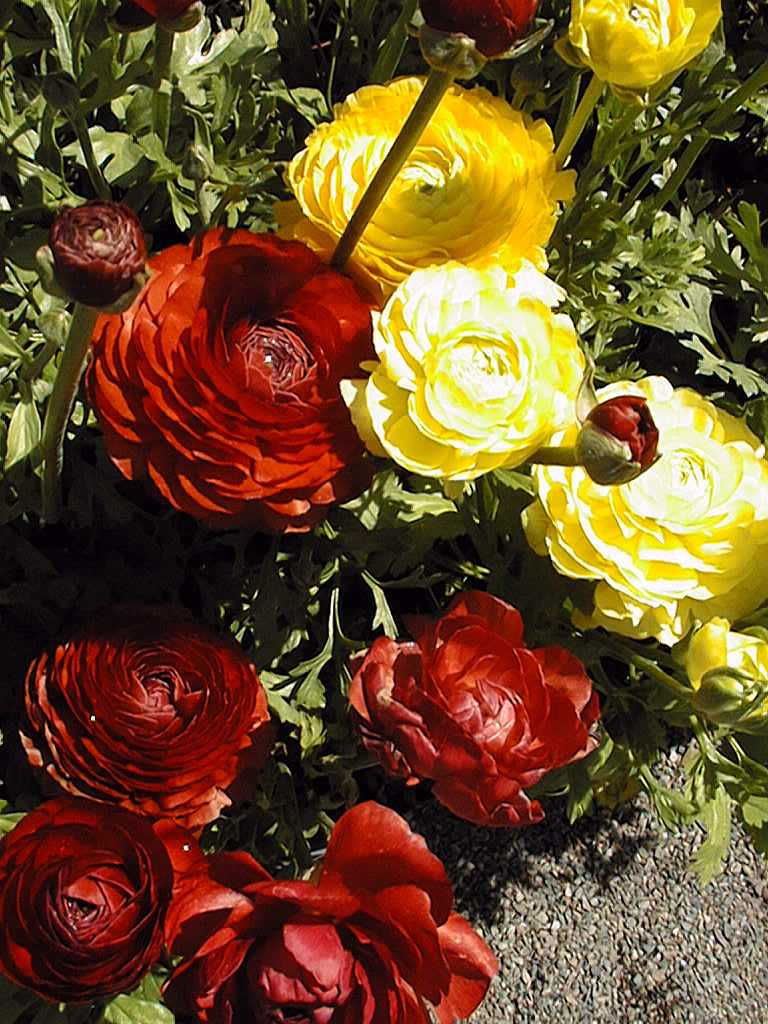An irresistible color for anyone who loves purple. These 'spring roses' have shapely buds that open into gorgeous flowers with layers of tissue-thin petals. Where winters are mild (zones 8-11), plant ranunculus bulbs in fall for early spring flowers. They are excellent container plants. Ranunculus Mix, 10 Bulbs,make brilliant cut flowers and look stunning in borders and containers! Purple Ranunculus Bulbs Persian Buttercup - 4 Bulbs - Garden Decoration Cut Flowers Home Decoration. 4.2 out of 5 stars 26. Ranunculus - Persian Buttercups Ranunculus acris 'Flore Pleno' (Double Meadow Buttercup) Award-winning Ranunculus acris 'Flore Pleno' (Double Meadow Buttercup) is an erect, clump-forming perennial bearing a profusion of rosette-like, tightly-double, golden yellow flowers. Ranunculus asiaticus, commonly called Persian buttercup, is a tuberous-rooted plant that blooms in late spring to early summer in the St. It features cup-shaped, poppy-like flowers (to 2” diameter) in red, pink, purple, yellow and white with distinctive purple-black.
| Ranunculus asiaticus | |
|---|---|
| Scientific classification | |
| Kingdom: | Plantae |
| Clade: | Tracheophytes |
| Clade: | Angiosperms |
| Clade: | Eudicots |
| Order: | Ranunculales |
| Family: | Ranunculaceae |
| Genus: | Ranunculus |
| Species: | |
| Binomial name | |
| Ranunculus asiaticus | |
Ranunculus asiaticus, the Persian buttercup, is a species of buttercup (Ranunculus) native to the eastern Mediterranean region in southwestern Asia, southeastern Europe (Crete, Karpathos and Rhodes), and northeastern Africa.[1]
It is a herbaceousperennial plant growing to 45 cm tall, with simple or branched stems. The basal leaves are three-lobed, with leaves higher on the stems more deeply divided; like the stems, they are downy or hairy. The flowers are 3–5 cm diameter, variably red to pink, yellow, or white, with one to several flowers on each stem.[2]
It is a protected species in some jurisdictions, including Israel.
Cultivation and uses[edit]
Double-flowered forms, which are likely hybrids, are a popular ornamental plant in gardens, and widely used in floristry. Numerous cultivars have been selected, including 'Bloomingdale', 'Picotee', 'Pot Dwarf', and 'Superbissima'. The plants can tolerate light frost, but are not hardy at temperatures below -10 °C.[2]
'Tecolote' and 'Bloomingdale' are examples of the double-flowered plants (not shown here). The single-flowered species form is not commercially cultivated on any significant scale. By contrast, the similar-looking Anemone coronaria is widely available in single-flower 'De Caen' hybrid forms. However, as with Ranunculus asiaticus, the species form, which also has red single flowers, is not commercially cultivated.

Persian Buttercups Ranunculus
References[edit]
- ^'Ranunculus asiaticus'. Germplasm Resources Information Network (GRIN). Agricultural Research Service (ARS), United States Department of Agriculture (USDA). Retrieved 16 January 2018.
- ^ abHuxley, A., ed. (1992). New RHS Dictionary of Gardening. Macmillan ISBN0-333-47494-5.
External links[edit]
- Media related to Ranunculus asiaticus at Wikimedia Commons
Ranunculus Champagne Bulbs

Ranunculus is a genus of perennial or annual herbs in the Ranunculaceae family. The leaves are usually alternate and palmately lobed or divided. While the thimble-like, April-blooming, often shiny flowers are most commonly yellow, cultivars have been bred bearing many other colors such as orange, pink, red, and white. The flowers give way to a head of small, dry achenes; because of this, some species can be a bit weedy in disturbed areas. However, they are great pollinator plants and serve as food for hummingbirds. Consider using them for beds, borders, rock gardens, and fresh cut flowers.
These plants do best in full to PM sun. When planting, cover the tuberous roots 3 in. (7.5 cm) in soil and space 3-6 in. (8-15 cm) apart. Soak the tubers for 1 hour before planting or water well once planted. The foliage tends to die down in the summer.
